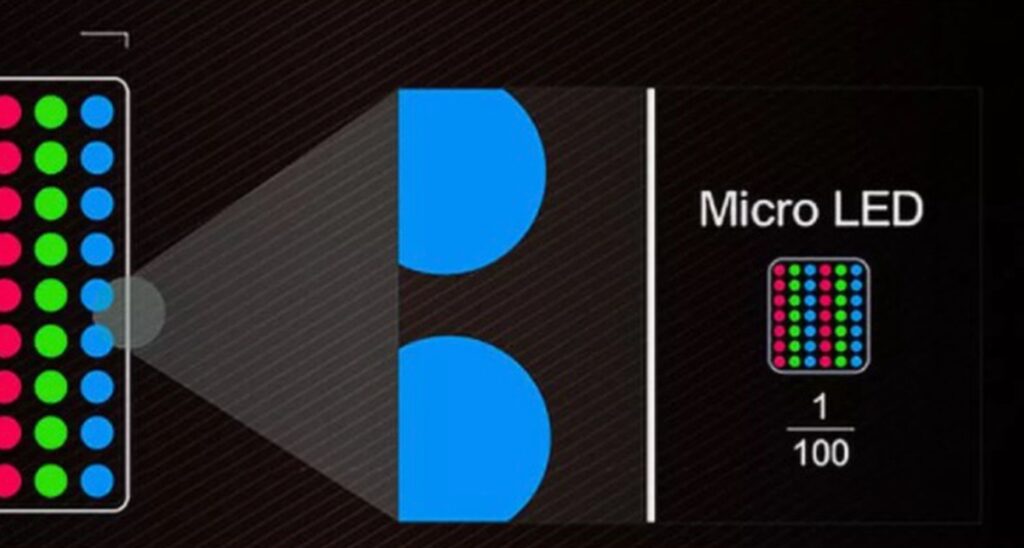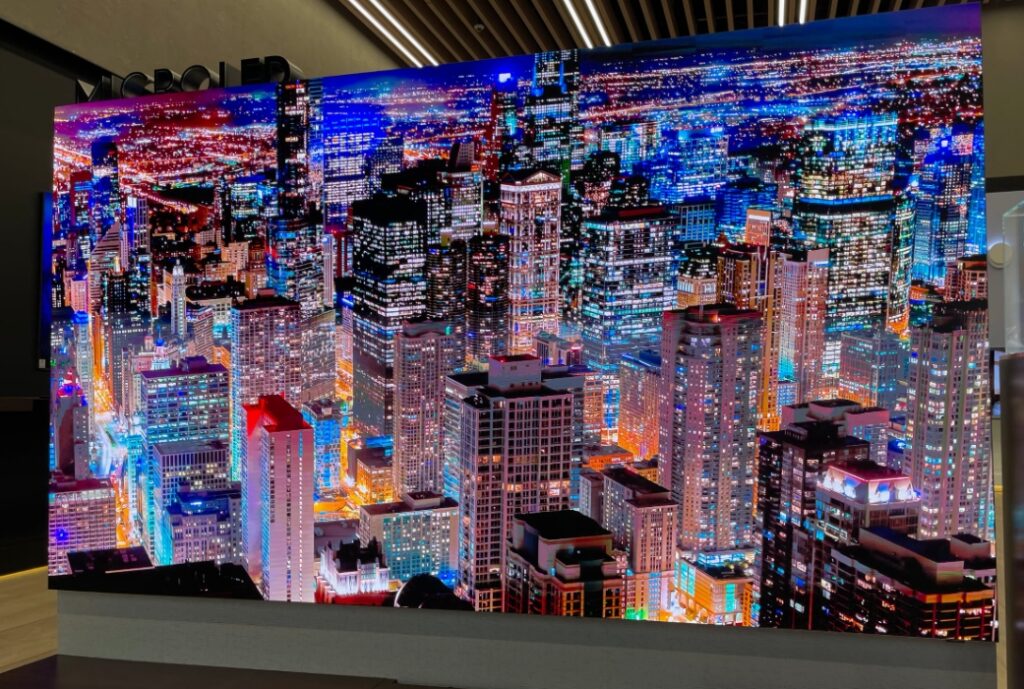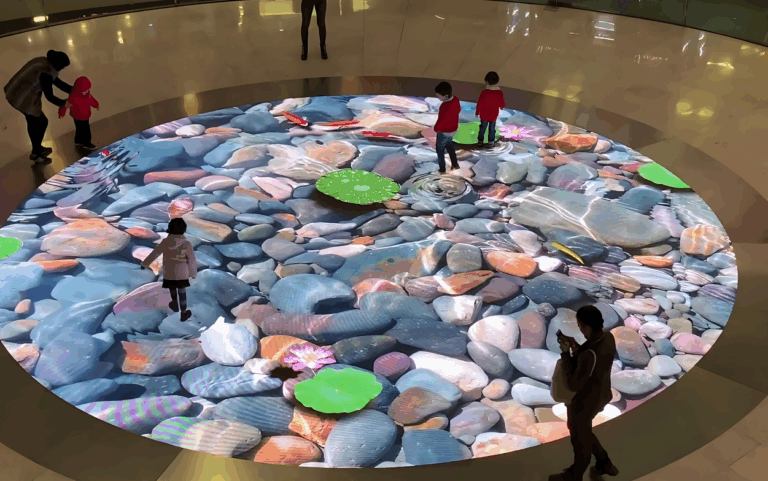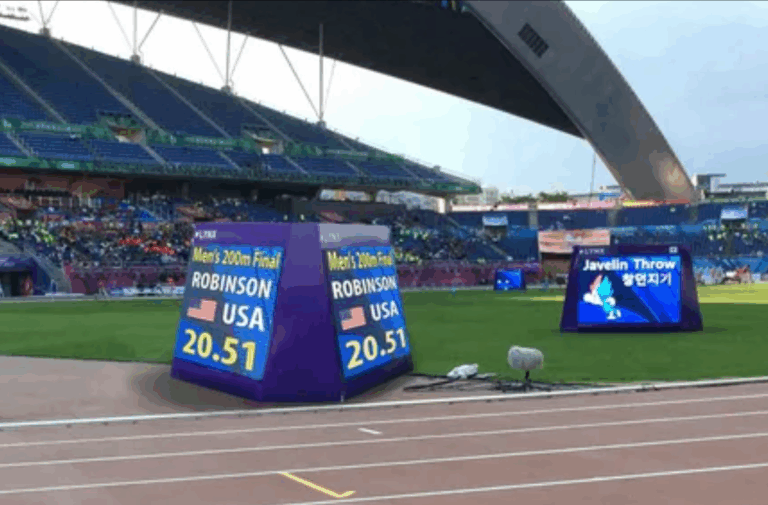Contents
- Fundamentals of Micro LED Technology
- Features
- Use Cases
- Micro LED Pricing
- Conclusion
Micro LED refers to LEDs with sizes ranging from 50 micrometers to 100 micrometers. This cutting-edge display technology uses tiny LEDs as pixels, which emit light directly without requiring a backlight. Each Micro LED pixel can be independently controlled, offering high brightness, excellent contrast, and superior color accuracy.

1. Fundamentals of Micro LED Technology
Pixel Structure: Micro LED uses miniature LEDs (in the micrometer range) as individual pixels. Unlike traditional LCD and OLED, it does not require backlighting or filters.
Self-Emissive: Each Micro LED pixel emits light independently, meaning black pixels emit no light, achieving true blacks and infinite contrast.
Response Time: Micro LED boasts extremely fast response times, nearly instantaneous, making it ideal for displaying fast-moving images.
Thermal Management: With each LED pixel emitting light independently and distributing heat more evenly, Micro LED displays have superior thermal management performance. Explain the 9 differences between Mini LED and Micro LED.
2. Features
Ultra-High Definition Resolution: The tiny size of Micro LEDs allows for a high pixel density in a small space, enabling extremely high resolutions.
High Color Saturation: Micro LEDs can display vibrant and accurate colors, providing an exceptional visual experience.
High Contrast: Micro LED displays deliver pure blacks as they emit almost no light when turned off, resulting in extremely high contrast.
Fast Response: The rapid response time of Micro LEDs makes them perfect for displaying fast-moving content, such as sports events or action movies.
Low Power Consumption: Compared to traditional LCD or OLED displays, Micro LEDs consume less power at the same brightness level. Which one is more suitable for your project, Micro LED or OLED?
Long Lifespan: Micro LEDs are highly durable and stable, with an expected lifespan exceeding 100,000 hours.
Wide Viewing Angles: Micro LED displays maintain consistent color and brightness levels when viewed from different angles.
3. Use Cases
High-End TVs and Monitors: Ideal for consumers and professional fields seeking ultimate picture quality.
Commercial Displays: Suitable for digital billboards, exhibition centers, and other venues requiring high resolution and color performance.
Automotive Industry: Used in dashboards and information displays, offering clear and responsive visuals.
Virtual Reality and Augmented Reality: Micro LED displays are perfect for VR and AR devices due to their fast response time and high pixel density. Take you to understand the 10 major differences between XR technology and virtual production technology.
4. Micro LED Pricing
Initial Cost: The current production cost of Micro LED technology is high, resulting in expensive products. This is primarily due to the high precision and complexity involved in manufacturing.
Value for Money: Despite the high price, the superior performance and longevity of Micro LED displays provide excellent value in the high-end market.
Market Trends: As technology advances and production scales up, the price of Micro LED displays is expected to decrease, making them more accessible.

Due to its complex manufacturing process and high production costs, Micro LED displays are usually expensive.
Price Range
Consumer Electronics (such as TVs and monitors):
Small size (such as less than 55 inches): Micro LED TVs of this size are very rare on the market, but the price is expected to be above $10,000.
Medium size (such as 55-75 inches): It is about $30,000 to $100,000, depending on the brand and resolution.
Large size (such as 75 inches and above): Usually more than $100,000, and can even reach more than $200,000.
Commercial and Professional Displays:
Small display: The price per square meter is about $20,000 to $50,000.
Medium display: The price per square meter may be between $50,000 and $100,000.
Large display: The price per square meter may exceed $100,000.
Due to large price fluctuations, for specific quotations, it is recommended to contact the supplier directly or check major e-commerce platforms, manufacturer’s official website, etc. to obtain the latest quotation information.
5. Conclusion
Micro LED represents the future of display technology, offering unprecedented image quality and performance. While the current high cost limits its widespread adoption in the mass market, ongoing technological advancements suggest that Micro LED may soon dominate the high-end display sector. For users seeking an unparalleled visual experience and professional applications, Micro LED is undoubtedly a worthy consideration.





